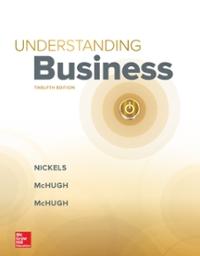
Assignment 9 - A Bundling Example Here's a simple numerical example that is meant to illustrate some of the problems associated with the textbooks bundling case we discussed earlier in the semester. I will ask you to solve this as a purely bundling problem and find the optimal prices that the firm will choose, but then I also want to take this one step further and ask you to calculate the efficiency implications of this on the market. That means you will be asked to calculate the resulting consumer surplus and total market surplus that will result under each pricing regime. So let's assume that 7 students are looking to purchase Economics and Accounting textbooks. Furthermore, let's assume they all have different valuations for these textbooks with some students willing to pay much more for Economics textbooks than for Accounting textbooks and vice-versa. There are a multitude of reasons why that might happen - for instance students who major in a particular discipline are willing to pay more for the textbooks directly related to their majors. So let's assume the following valuations: Accounting Textbooks Economics Textbooks Student 1 120 10 Student 2 100 30 Student 3 90 70 Student 4 80 80 Student 5 60 90 Student 6 40 100 Student 7 10 120 Let's also assume that an Accounting textbook costs the bookstore $20 to procure and an Economics textbook costs $10. Assuming the bookstore is trying to maximize its profits, answer the following questions. Before you go ahead and say that universities are not for-profit organizations, you need to realize that a lot of services sold to students on our campus are actually subcontracted by the university to for-profit companies. The bookstore is actually Barnes and Noble, all the food courts are actually Aramark, etc. Questions: 1. Assuming the bookstore is using individual pricing, what will be the prices chosen for Accounting and Economics textbooks, respectively? What will be the resulting profit, student surplus, and total surplus (profit+student surplus)? Assuming a pure bundling strategy, what will be the price of the bundle and the resulting profit, student surplus, and total surplus? Assuming a mixes bundling strategy, what will be the price of the bundle, the price of the individually priced texbooks and the resulting profit, student surplus, and total surplus? Contrast and compare between the 3 pricing options. Which option is the best for the bookstore, which option is the best for students, and which option is the best for the market overall? 5. What would actually be the social optimum pricing (that would maximize the total surplus)








